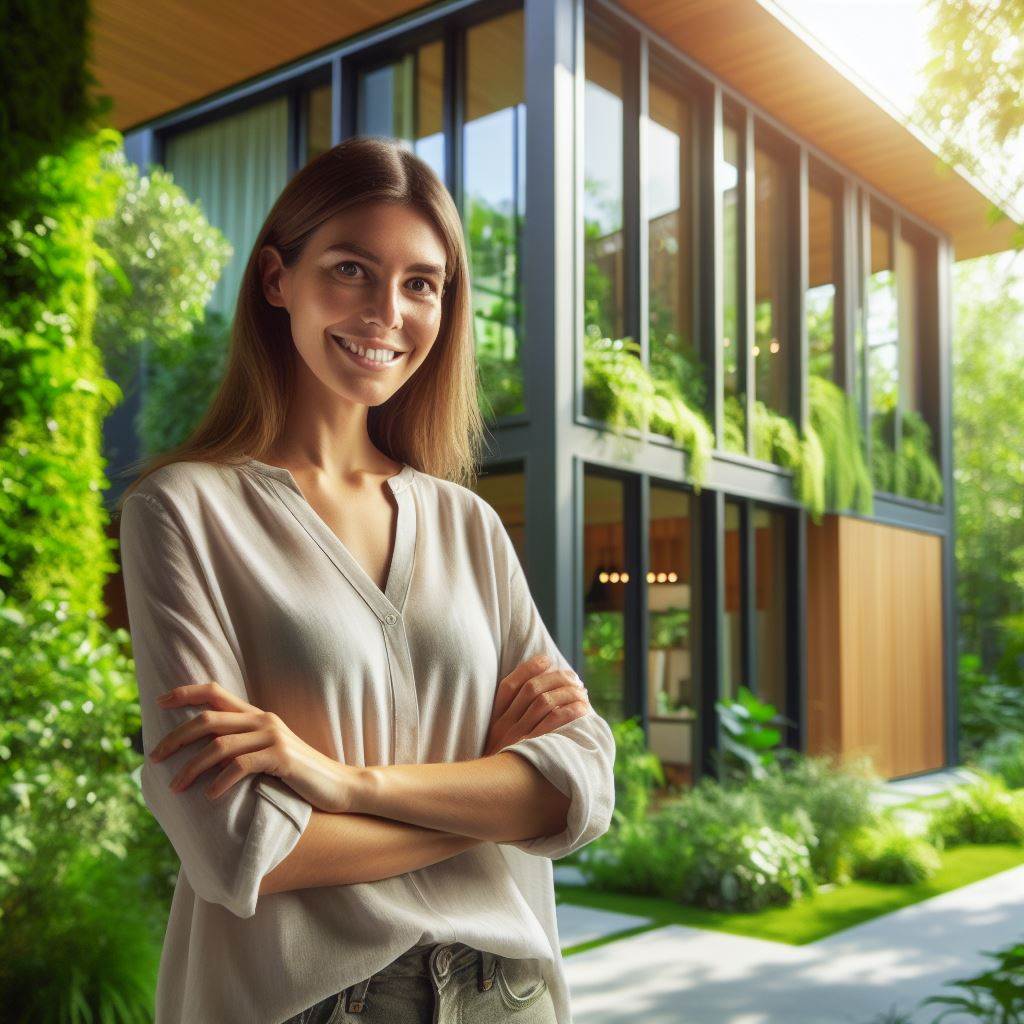Introduction
LEED Certification, standing for Leadership in Energy and Environmental Design, serves as a globally recognized symbol of sustainability achievement in the construction industry.
It encompasses various aspects of building design, construction, operation, and maintenance to promote environmentally friendly practices and mitigate the environmental impact of buildings.
In the realm of real estate, LEED Certification holds immense relevance and importance.
With the escalating concerns over climate change and environmental degradation, stakeholders in the real estate industry are increasingly seeking ways to incorporate sustainability into their projects.
LEED Certification offers a comprehensive framework for achieving this goal, providing guidelines and standards for designing and constructing buildings that are energy-efficient, water-efficient, and resource-efficient.
Moreover, LEED-certified buildings not only contribute to environmental conservation but also offer tangible benefits to property owners, developers, tenants, and communities.
These benefits include lower operating costs through reduced energy and water consumption, enhanced occupant health and productivity due to improved indoor air quality and daylighting, increased property value and marketability, and alignment with corporate social responsibility goals.
Throughout this blog post, we will delve deeper into the various facets of LEED Certification, including its core principles and rating systems, the process of certification, the benefits and challenges associated with pursuing certification, case studies of successful LEED-certified projects, and emerging trends and innovations in sustainable building practices.
By gaining a comprehensive understanding of LEED Certification, readers will be equipped with the knowledge and insights needed to navigate the evolving landscape of sustainable real estate development and make informed decisions that align with their environmental and business objectives.
What is LEED Certification?
The acronym (Leadership in Energy and Environmental Design)
LEED stands for Leadership in Energy and Environmental Design.
This acronym encapsulates the core principles of the certification system, emphasizing leadership in sustainable practices.
It signifies a proactive approach to addressing energy consumption and environmental impact within the realm of design, construction, and operation of buildings and communities.
LEED serves as a guiding framework for promoting efficiency, conservation, and responsible stewardship of natural resources.
Its purpose and mission
The purpose of LEED certification is multifaceted. At its core, it seeks to revolutionize the way buildings and communities are conceived, built, and managed.
Its mission extends beyond mere compliance with environmental regulations; it aspires to foster innovation and excellence in sustainability practices.
Transform Your Real Estate Decisions
Unlock personalized real estate insights crafted just for you. Get actionable advice designed to amplify your success.
Get StartedBy promoting energy efficiency, resource conservation, and healthier indoor environments, LEED aims to mitigate the environmental footprint of the built environment while enhancing the quality of life for occupants.
Various levels of certification (Certified, Silver, Gold, Platinum) and their requirements
LEED certification operates on a tiered system consisting of four levels: Certified, Silver, Gold, and Platinum.
Each level represents a progressively higher standard of environmental performance and sustainability.
The requirements for each level encompass a range of criteria, including energy efficiency, water conservation, materials selection, indoor environmental quality, and site sustainability.
Certified serves as a baseline for green building practices, while Silver, Gold, and Platinum denote increasingly ambitious achievements in sustainability.
Projects must demonstrate compliance with specific prerequisites and earn points across various credit categories to attain higher levels of certification.
Platinum represents the pinnacle of LEED achievement, signifying exemplary performance in environmental stewardship and innovation.
Read: Smart Homes for Sustainability
Benefits of LEED Certification
LEED Certification offers numerous benefits that extend beyond just being environmentally friendly.
These benefits encompass economic advantages for building owners and tenants, social and health advantages for occupants, and the ability to attract and retain tenants.
Let’s explore these advantages in detail:
Environmental Benefits of LEED Buildings
- Energy Efficiency: LEED buildings are designed to minimize energy consumption through efficient lighting, heating, and cooling systems.
- Water Conservation: LEED buildings incorporate water-saving features such as low-flow fixtures, rainwater harvesting, and native landscaping.
- Reduced Carbon Footprint: LEED buildings use sustainable materials, promote waste reduction, and aim for net-zero or carbon-neutral operations.
- Improved Air Quality: LEED buildings focus on indoor air quality by using low-emitting materials, efficient ventilation, and proper insulation.
- Enhanced Biodiversity: LEED buildings often include green roofs, urban gardens, and permeable surfaces that support local flora and fauna.
Economic Advantages for Building Owners and Tenants
- Operational Cost Savings: LEED-certified buildings consume less energy and water, resulting in lower utility bills and operational expenses.
- Incentives and Rebates: Many governments and utilities offer financial incentives, tax credits, and rebates for constructing and operating LEED buildings.
- Increased Property Value: LEED certification adds value to buildings, attracting potential buyers or tenants who appreciate sustainable and efficient properties.
- Higher Rental Rates: LEED-certified buildings are perceived as premium spaces, allowing owners to command higher rental rates and attract quality tenants.
- Better Occupancy Rates: LEED buildings often experience higher occupancy rates due to increased tenant demand for sustainable and healthy working environments.
Social and Health Advantages for Occupants
- Enhanced Indoor Comfort: LEED buildings prioritize occupant comfort through features like temperature control, natural lighting, and acoustic performance.
- Promotion of Well-being: LEED buildings promote occupant health by using materials that are free from harmful chemicals and designing spaces that encourage physical activity.
- Inspiring Workspaces: Green buildings provide aesthetically pleasing environments that boost productivity, creativity, and job satisfaction for occupants.
- Improved Mental Health: Access to natural daylight, outdoor views, and green spaces in LEED buildings has been linked to reduced stress and better mental well-being.
Attracting and Retaining Tenants
- Corporate Social Responsibility (CSR): Businesses increasingly prioritize sustainability and prefer leasing or purchasing spaces in LEED-certified buildings.
- Health and Wellness Focus: Tenants value LEED certification as it aligns with their commitment to providing healthy and productive spaces for employees.
- Green Building Labeling: LEED certification acts as a trustworthy indication of a building’s sustainability, making it more appealing to tenants.
- Positive Brand Association: Occupying a LEED-certified building reflects positively on a company’s brand image, attracting clients and customers who share similar values.
- Employee Attraction and Retention: Working in a LEED-certified building can help companies attract and retain top talent who seek sustainable and inspiring workplaces.
In fact, LEED certification not only benefits the environment but also offers various advantages to building owners, tenants, and occupants, including cost savings, increased property value, improved well-being, and tenant attraction.
It’s clear that pursuing LEED certification is a win-win scenario for all stakeholders involved in the building industry.
Read: Eco Materials: Real Estate’s Future
Showcase Your Real Estate Business
Publish your company profile on our blog for just $200. Gain instant exposure and connect with a dedicated audience of real estate professionals and enthusiasts.
Publish Your ProfileLEED Certification Process
Steps involved in obtaining LEED certification
Obtaining LEED certification involves several steps that are overseen by the U.S. Green Building Council (USGBC).
This certification process ensures that buildings meet high standards of sustainability and environmental performance.
- Step 1: Preparing and Submitting the Application: The first step in obtaining LEED certification is to prepare and submit the certification application.
The application provides essential information about the project, including its location, size, and intended green design strategies. - Step 2: Review and Evaluation by USGBC: Once the application is submitted, the USGBC reviews and evaluates the project based on its compliance with LEED requirements.
This evaluation process determines if the project can achieve the desired certification level. - Step 3: Documentation and Verification: After the initial review, documentation and evidence supporting the project’s compliance with LEED requirements must be provided.
This includes detailed plans, specifications, and other relevant information. - Step 4: Performance Period Monitoring: During the performance period, the project must demonstrate consistent sustainable practices.
This includes tracking and reporting on energy and water consumption, waste management, and other performance metrics. - Step 5: Final Review and Certification: Once the performance period is completed, a final review is conducted to verify the project’s ongoing compliance and performance.
If all requirements are met, LEED certification is granted.
Role of the U.S. Green Building Council (USGBC)
The USGBC plays a vital role in the LEED certification process. As the governing body, the USGBC sets the standards and criteria for certification.
They oversee the entire process, from application submission to final certification.
The USGBC provides resources, guidance, and support to project teams throughout the certification process.
This includes access to educational materials, workshops, and technical assistance to help navigate the requirements effectively.
The Certification Application and Review Process
The certification application serves as a comprehensive document that outlines the project’s sustainability goals, design strategies, and anticipated environmental performance.
It provides a clear roadmap for achieving LEED certification.
During the review process, the USGBC evaluates the application, documentation, and performance data to ensure compliance with LEED requirements.
The goal is to encourage sustainable practices and maximize environmental impact.
Ongoing Monitoring and Recertification
LEED-certified projects must maintain their sustainable practices after initial certification.
Ongoing monitoring is crucial to ensure that performance targets and environmental goals are met throughout the building’s lifecycle.
Recertification may be required periodically based on the certification level obtained.
This process reassesses the project’s performance and provides opportunities to improve and update sustainability initiatives.
In short, obtaining LEED certification involves a multi-step process that includes application submission, review, documentation, ongoing monitoring, and certification.
The USGBC plays a crucial role in setting standards, guiding project teams, and evaluating compliance.
Ongoing monitoring and recertification ensure long-term sustainability and continuous improvement.
Read: Green Roofs: Are They Worth It?

LEED Certification Categories
Different categories evaluated by LEED certification
LEED certification, or Leadership in Energy and Environmental Design, is a globally recognized symbol of sustainability achievement.
It evaluates various categories, each focusing on different aspects of a building project’s environmental impact.
- Sustainable Sites: The Sustainable Sites category evaluates the location, design, and construction of a project in order to reduce its impact on the surrounding environment.
Points are earned by promoting alternative transportation, minimizing heat island effect, and preserving open space. - Water Efficiency: Water Efficiency focuses on reducing potable water consumption by implementing efficient fixtures and systems.
Strategies such as rainwater harvesting, graywater utilization, and water-efficient landscaping contribute to earning points in this category. - Energy and Atmosphere: Energy and Atmosphere category emphasizes energy efficiency, renewable energy, and greenhouse gas reductions.
Points can be earned through energy modeling, using efficient HVAC systems, optimizing building insulation, and incorporating alternative energy sources like solar or wind power. - Materials and Resources: Materials and Resources category aims to reduce waste, encourage recycling, and promote the use of sustainable materials.
Points are awarded for using recycled content, optimizing material life cycles, implementing waste management plans, and prioritizing regional sourcing. - Indoor Environmental Quality: Indoor Environmental Quality focuses on creating a healthy and comfortable indoor environment for occupants.
Points are earned through strategies like improving ventilation, reducing indoor air pollutants, enhancing thermal comfort, and providing access to daylight and views. - Innovation: The Innovation category allows project teams to earn additional points for implementing innovative strategies that exceed the requirements of other LEED categories.
It encourages the exploration of new technologies, approaches, and sustainable practices. - Regional Priority: The Regional Priority category identifies and addresses the most pressing environmental concerns specific to a project’s location.
Extra points are awarded for strategies that address these regional challenges and contribute to the sustainability goals of the region.
Importance of Integrating Sustainable Practices
Integrating sustainable practices into each LEED certification category is crucial for maximizing a project’s environmental impact.
It not only helps in earning points but also enables the project to achieve higher levels of certification.
By incorporating sustainable strategies, a project contributes to environmental conservation, reduces energy consumption, minimizes waste, enhances occupant health and well-being, and demonstrates corporate social responsibility.
Integrating sustainable practices also brings economic benefits such as energy savings, reduced operating costs, increased property value, and improved marketability and tenant satisfaction.
In general, LEED certification evaluates various categories to assess a building project’s sustainability performance.
Each category covers specific aspects, and points are earned by implementing strategies aligned with sustainable practices.
By integrating these practices, projects can achieve higher certification levels while making a positive impact on the environment, occupant health, and economic aspects.
Read: Net-Zero Living: A US Overview
Case Studies
Examples of LEED-Certified Buildings
The Edge, Amsterdam
- This architectural marvel sets a high standard for sustainable design.
- Its use of renewable energy sources and advanced technologies reduces energy consumption.
- The building’s intelligent lighting system adjusts based on occupancy, further conserving energy.
One Central Park, Sydney
- A beacon of green innovation, this development seamlessly merges nature with urban living.
- Its striking vertical gardens not only beautify the skyline but also improve air quality.
- Integrated water recycling systems contribute to water conservation efforts in the heart of the city.
Bank of America Tower, NYC
- As one of the greenest skyscrapers in the world, it exemplifies eco-conscious construction.
- Cutting-edge HVAC systems minimize energy waste while ensuring occupant comfort.
- Innovative features like daylight harvesting maximize natural light, reducing reliance on artificial lighting.
Innovative Features and Practices
The Edge
- Rainwater harvesting systems collect and reuse water for non-potable purposes, reducing strain on municipal water resources.
- Smart sensors monitor environmental conditions and adjust settings for optimal energy efficiency in real-time.
One Central Park
- Its unique design incorporates a cantilevered heliostat, directing sunlight into shaded areas and reducing the need for artificial lighting.
- Green roofs and walls not only provide insulation but also create habitats for local wildlife, promoting biodiversity.
Bank of America Tower
- High-performance glazing minimizes heat gain and loss, enhancing thermal comfort while reducing HVAC loads.
- Underfloor air distribution systems deliver conditioned air directly to occupants, improving indoor air quality and comfort.
Impact on Property Value and Marketability
Enhanced Property Value
- LEED-certified buildings command higher prices in the real estate market due to their superior sustainability credentials.
- Investors recognize the long-term cost savings associated with energy-efficient buildings, leading to increased property valuations.
Premium Tenants
- Companies seeking to align with sustainable practices prefer leasing space in LEED-certified buildings, driving up demand.
- The prestigious reputation of LEED certification attracts top-tier tenants, fostering a vibrant and sustainable community within these developments.
Improved Marketability
- LEED certification serves as a powerful marketing tool, appealing to environmentally-conscious tenants and investors.
- The assurance of sustainable design and operational efficiency enhances the attractiveness of these buildings, facilitating faster leasing and higher occupancy rates.
In review, case studies of LEED-certified buildings demonstrate the success and effectiveness of this certification in promoting sustainable practices.
The innovative features and practices implemented in these projects prove that sustainable design is both achievable and economically advantageous.
Showcase Your Real Estate Business
Publish your company profile on our blog for just $200. Gain instant exposure and connect with a dedicated audience of real estate professionals and enthusiasts.
Publish Your ProfileLEED certification not only increases property value and marketability but also creates healthier indoor environments and reduces the overall environmental impact of buildings.
By setting higher standards for the construction industry, LEED certification encourages innovation and pushes for continuous improvements in sustainability.
The impact of LEED certification goes beyond individual buildings and developments, transforming the market towards a greener and more resilient future.
Challenges and Future of LEED Certification
Common challenges faced in pursuing LEED certification
Pursuing LEED certification can face common challenges such as cost and time constraints.
LEED standards have been continuously evolving to ensure the highest level of sustainability in buildings.
The future of LEED certification lies in advancements like net-zero buildings and smart technologies.
The cost of LEED certification remains a challenge for many, as it requires additional investments in sustainable materials and technologies.
Another challenge is the time it takes to complete the LEED certification process, which can be lengthy and demanding.
However, these challenges are being addressed through various initiatives, such as streamlined certification processes and financial incentives.
Evolving standards and continuous improvement of LEED
LEED standards have been continuously improving, keeping up with the latest advancements in green building practices.
The standards have expanded beyond just energy efficiency to include aspects like human health and wellness.
LEED v4, the current version of the certification, emphasizes a holistic approach to building design and operations.
It focuses on reducing greenhouse gas emissions, promoting water efficiency, and encouraging the use of sustainable materials.
LEED v4 also prioritizes the well-being of occupants by addressing indoor air quality and access to natural light.
Potential future trends and developments in the green building industry
The future of LEED certification looks promising, with more buildings striving to achieve net-zero energy status.
Net-zero buildings generate as much energy as they consume, reducing their environmental impact significantly.
LEED is also adapting to incorporate emerging technologies, such as smart building systems and renewable energy integration.
The integration of these technologies will further enhance the sustainability and energy efficiency of LEED certified buildings.
The green building industry is constantly evolving, and LEED certification will continue to keep pace with these developments.
One potential future trend is the incorporation of regenerative design principles in LEED certification.
Regenerative design goes beyond sustainability, aiming to restore and rejuvenate the natural environment.
It focuses on creating buildings that have a positive impact on surrounding ecosystems and communities.
LEED may also adopt stricter standards for energy performance and carbon neutrality in the future.
Buildings may be required to achieve higher energy efficiency levels and offset any remaining carbon emissions.
The future of LEED certification will also involve greater collaboration between architects, engineers, and builders.
This collaboration will ensure that sustainable design principles are integrated from the initial stages of a project.
Overall, whilst there are challenges in pursuing LEED certification, the future prospects of the green building industry and the continuous improvements in LEED standards are encouraging.
Conclusion
LEED certification is crucial in promoting sustainable and environmentally-friendly real estate practices.
Through our deep dive into LEED, we have learned that it focuses on energy efficiency, water conservation, indoor air quality, and materials selection.
By following LEED standards, real estate developers can reduce their environmental impact, enhance occupant health and comfort, and save on operating costs.
Showcase Your Real Estate Business
Publish your company profile on our blog for just $200. Gain instant exposure and connect with a dedicated audience of real estate professionals and enthusiasts.
Publish Your ProfileLEED certification also offers various benefits such as tax incentives, higher property values, and market recognition.
It is a comprehensive framework that drives innovation and fosters a green building industry.
As the demand for sustainable buildings continues to rise, LEED certification becomes even more important for stakeholders in the real estate sector.
It not only showcases a commitment to environmental responsibility but also attracts environmentally-conscious tenants, investors, and buyers.
Ultimately, LEED certification plays a pivotal role in creating a more sustainable future for the real estate industry and the planet as a whole.




